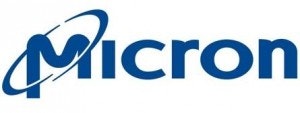Shares of memory maker Micron Technology, Inc. (NASDAQ:MU) have been on a tear. Upon reaching $10.27 last week, the stock has essentially doubled after bottoming out at $5.16 on Oct. 24. With the stock now only percentage points away from a 52-week high, investors want assurances that Micron has enough ammo to support the recent optimism. I don’t blame them.
Micron Technology, Inc. (NASDAQ:MU) is known for its volatility. And it certainly doesn’t help that the commodity memory industry, which has posted weak margins due to low average selling prices, or ASPs, has been shaky at best. But with names like SanDisk Corporation (NASDAQ:SNDK), Samsung and Applied Materials, Inc. (NASDAQ:AMAT), there’s also been a lot of value in this sector. And Micron certainly fits in that category. So, heading into the company’s earnings results, there was a lot to prove. And Micron Technology, Inc. (NASDAQ:MU)delivered.
Who and what is Micron today?
Unlike previous reports, Micron’s second-quarter results left very little for investors to complain about. Revenue arrived at $2.1 billion, up 3% year over year. While not exactly a strong number, when compared to the first-quarter results, it represents a 13% sequential jump. Plus it was enough to beat Street estimates of $1.92 billion.
The company’s flash memory business consists of NOR and NAND, non-volatile storage technologies that requires no power to retain data. Both work the same way, but are different in functionality. NAND, which is used in devices like MP3 players, is able to retain more storage, whereas NOR, which is used in mobile phones, is faster. Micron arguably perfected this market. But there have been plenty of struggles.
Not only has Micron Technology, Inc. (NASDAQ:MU) lost market share to SanDisk Corporation (NASDAQ:SNDK) and Samsung, but the declining PC industry and soft ASPs left investors no choice but to bail on the stock. So, the Street rejoiced that the strong performance was largely due to its flagship chips, NAND and DRAM (dynamic random access memory, the type often found in personal computers).
Is this the same management team?
Though I’ve followed this company for several years, I can’t say that I recognize this management team anymore, which is a good thing. The deficits that once aggravated investors are slowly being addressed. For instance, in the quarter, DRAM revenue surged 24% sequentially due to a 38% increase in sales volume. This is despite a 10% drop in ASPs.
Ordinarily, the soft ASP situation, while not new, would be cause for concern. But the Street didn’t expect much price movement. Plus, it seems that Micron focused more this quarter on moving PC-related DRAM, which has much lower margin. In other words, this is where the higher sales volume, while typically good, might have actually hurt.

